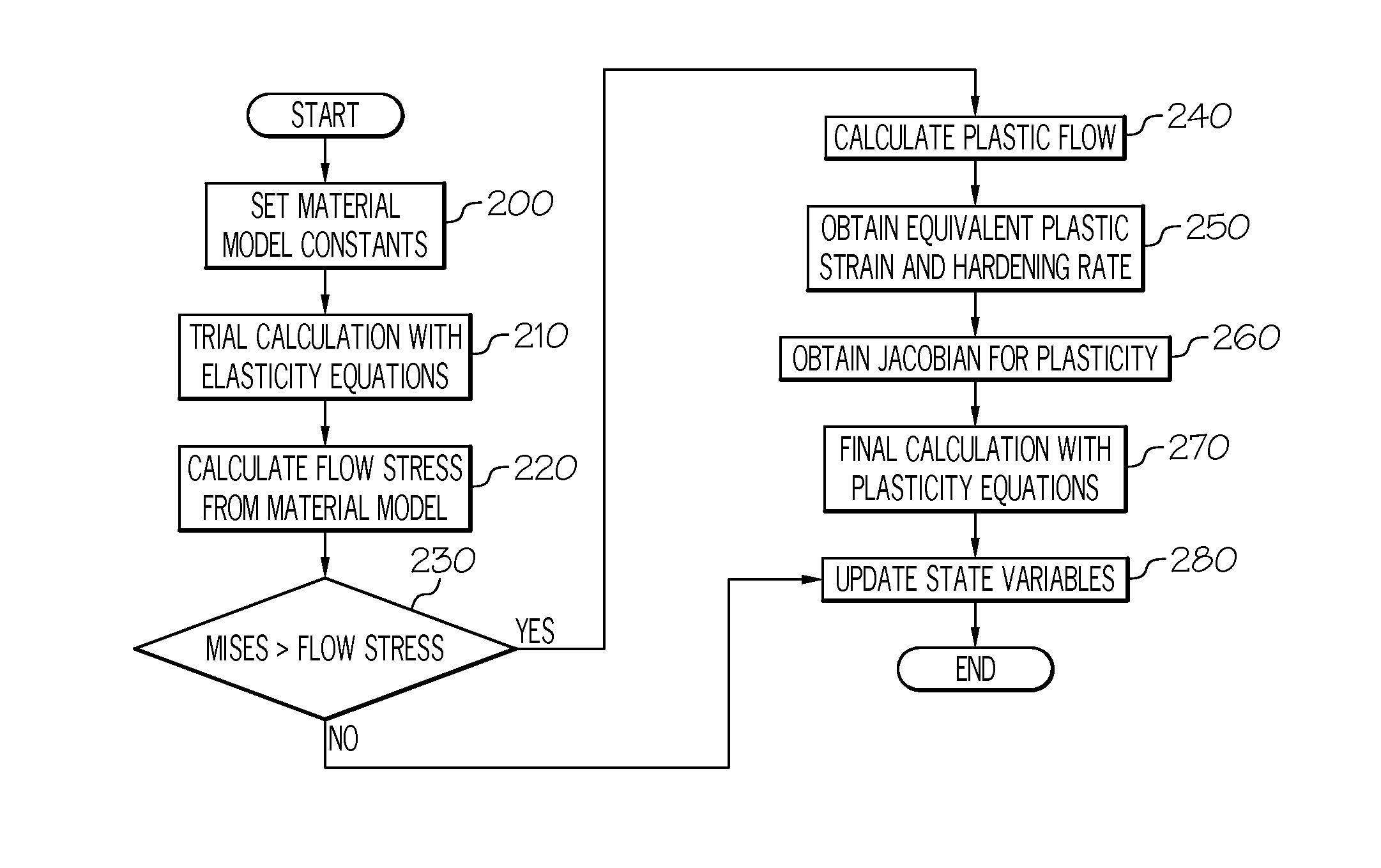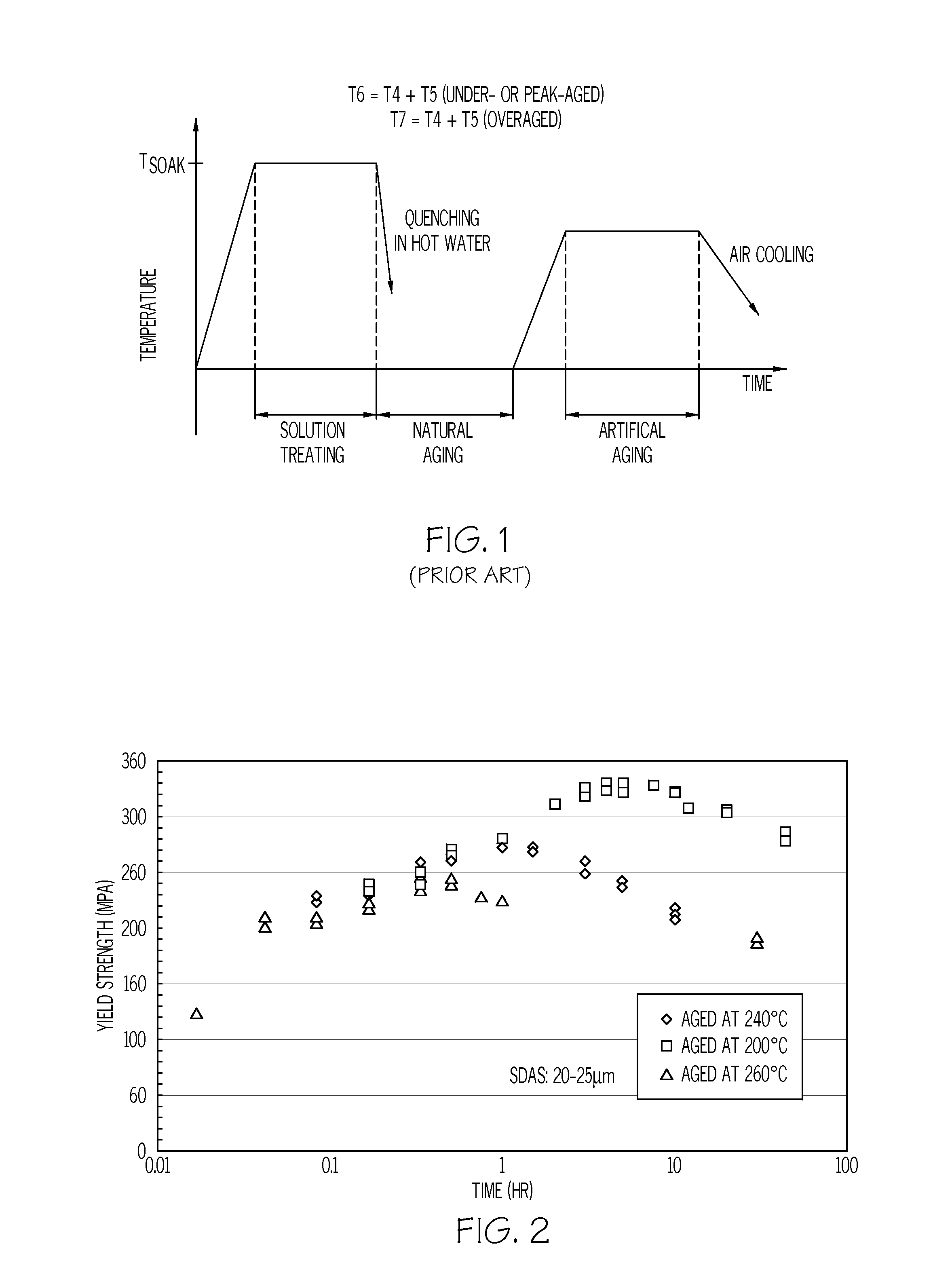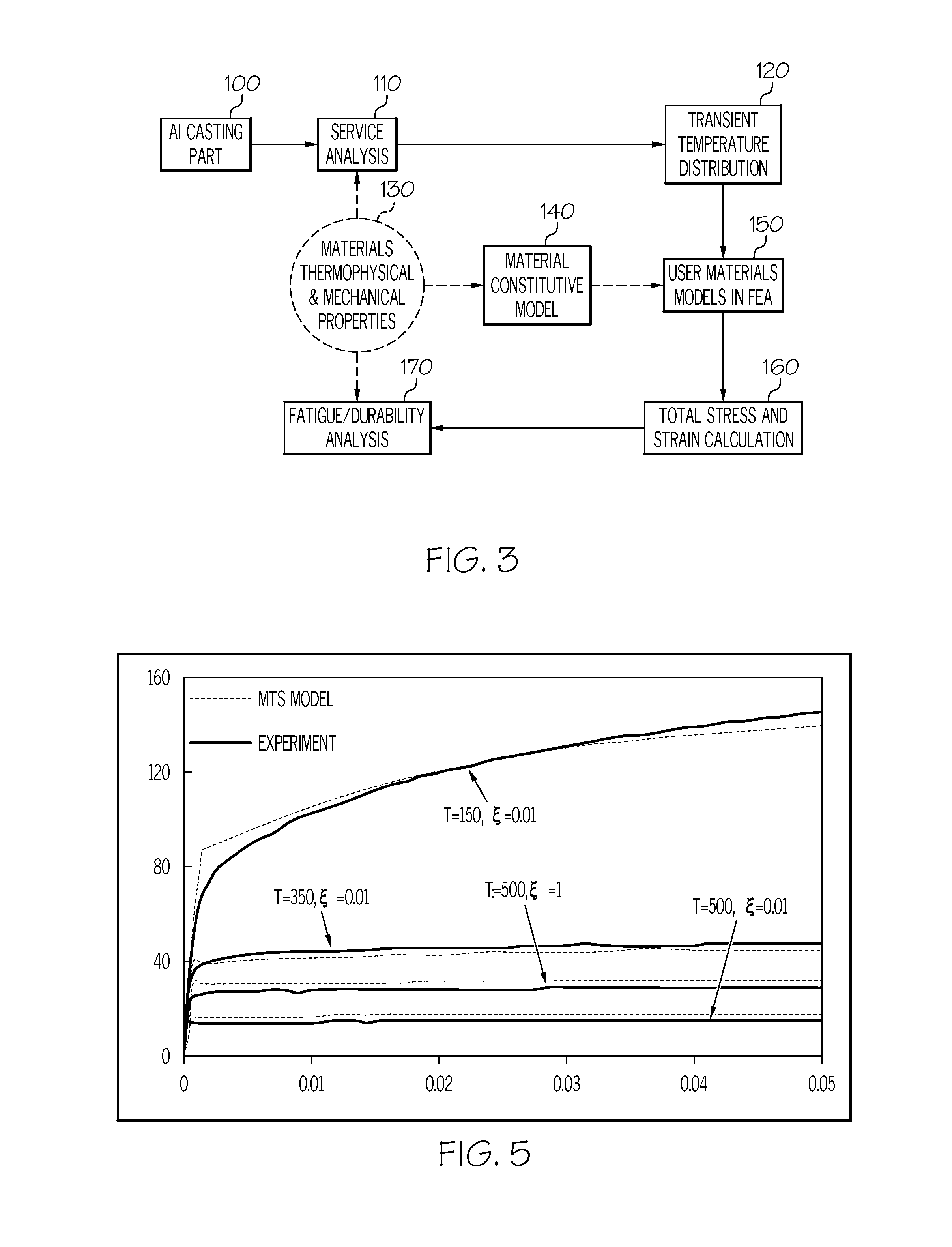Product design reliability with consideration of material property changes during service
a technology of product design reliability and material property change, applied in the direction of design optimisation/simulation, instruments, computation using non-denominational number representation, etc., can solve the problems of significant alteration of ability, thermal mechanical fatigue (tmf), and subjected to age hardening or softening
- Summary
- Abstract
- Description
- Claims
- Application Information
AI Technical Summary
Benefits of technology
Problems solved by technology
Method used
Image
Examples
Embodiment Construction
[0017]Referring first to FIG. 1, a typical T6 and / or T7 heat treatment cycle of an aluminum alloy according to the prior art is shown. In T5 aging, there are three types of aging conditions, commonly referred as (1) underaging, (2) peak aging and (3) overaging. At an initial stage of the aging, GP zones and fine shearable precipitates form and the structure is considered as underaged. At this stage, the material hardness and yield strength are usually low. Increased time at a given temperature or aging at a higher temperature further evolves the precipitate structure, hardness and yield strength increase to a maximum, the peak aging / hardness condition. Further aging decreases the hardness / yield strength and the structure becomes overaged due to precipitate coarsening and its transformation of crystallographic incoherency.
[0018]Referring next to FIG. 2, an example of aging responses of cast aluminum alloy 319 aged at various temperatures is shown. For the period of aging time tested ...
PUM
| Property | Measurement | Unit |
|---|---|---|
| temperatures | aaaaa | aaaaa |
| material property | aaaaa | aaaaa |
| geometric shape | aaaaa | aaaaa |
Abstract
Description
Claims
Application Information
 Login to View More
Login to View More - R&D
- Intellectual Property
- Life Sciences
- Materials
- Tech Scout
- Unparalleled Data Quality
- Higher Quality Content
- 60% Fewer Hallucinations
Browse by: Latest US Patents, China's latest patents, Technical Efficacy Thesaurus, Application Domain, Technology Topic, Popular Technical Reports.
© 2025 PatSnap. All rights reserved.Legal|Privacy policy|Modern Slavery Act Transparency Statement|Sitemap|About US| Contact US: help@patsnap.com



